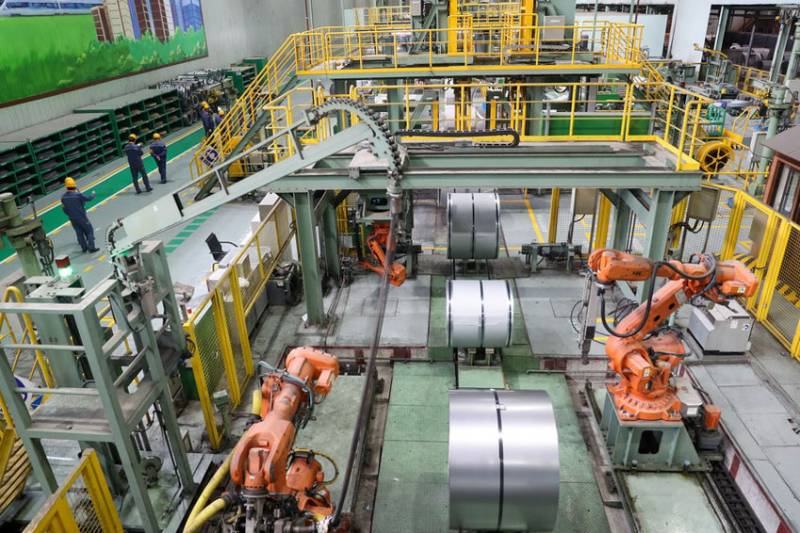BEIJING - The present government of Pakistan has taken special measures to further develop the textile industry and recently announced a lucrative energy package to help recuperate from the COVID-19 shock was also commendable. These views were expressed by Cheng Xizhong, visiting professor at Southwest University of Political Science and Law said here on Sunday. Recently announced lucrative energy package to help textile industry with peak electricity rates offers reduced tariffs on additional power consumption and fixes power price at $ 0.07 a unit and gas tariff at $ 0.065 per MMBtu, Cheng, also a senior fellow of the Charhar Institute said in his article published by China Economic Net (CEN).
He said the present government of Pakistan has taken special measures to gradually improve the business environment. To improve the sustainability of the development of the textile industry and have clear direction and objectives, All Pakistan Textile Mills Association (APTMA) is formulating a long-term development strategy for the textile industry. It plans to attract $ 7 billion of investment in the next five years, to increase the export volume of textiles and clothing by 100 per cent to $ 26 billion. Pakistan is the fourth largest cotton producer, the fourth largest textile producer and the twelfth largest textile exporter in the world. The textile industry is the most important pillar industry and the largest export industry in Pakistan. In recent years, Pakistan’s textile industry has been plagued by insecurity, high operating costs, declining competitiveness and sluggish demand in the international market. However, with the steady progress of the construction of the China-Pakistan Economic Corridor (CPEC), Pakistan’s textile industry and textile exports have a bright future, he added. According to his observation, Pakistan’s textile production and exports have the following main advantages.
First, the industrial chain is relatively complete. Pakistan is one of the few textile countries in the world with the production capacity of the whole industrial chain. At present, there are 1,221 cotton ginning mills, 442 spinning mills, 124 large-scale textile and garment factories and 425 small-scale textile and garment factories in Pakistan. The annual production capacity of cotton yarn is about 11.3 million spindles, with a total of 300,000 textile machines, 350,000 power looms and 18,000 knitting machines. The annual cotton cloth production capacity is 5.2 billion square meters, with a total of 700,000 industrial sewing machines. Pakistan’s annual cotton production is about 13 million bales, the annual output of man-made fibre is about 600,000 tons, and the annual output of terephthalic acid is 500,000 tons. All these provide a solid foundation for the development of the textile industry.
Second, the distribution of production and research is relatively concentrated. More than 60 per cent of Pakistan’s textile enterprises are concentrated in Punjab and 30 per cent in Sindh. Faisalabad in Punjab Province is a famous textile industrial city. It has a textile enterprise group composed of large, medium and small textile mills and workshops. Its textile exports account for 58 per cent of Pakistan’s total textile exports. Pakistan’s main textile technology institutions and facilities are also concentrated in the city, including the University of Agriculture Faisalabad (UAF), National Textile University (NTU), and cotton and agricultural research institutions. Third, industry organizations have great influence. The main trade organizations of Pakistan textile industry include All Pakistan Textile Mills Association, All Pakistan Textile Processing Mills Association and Pakistan Knitwear Manufacturers Association. Due to the pillar position of the textile industry in Pakistan’s national economy, All Pakistan Textile Mills Association and its local branches play an important role in the development of Pakistan’s textile industry.
Cheng observed that both China and Pakistan are major textile producers and exporters, and there is a certain degree of competition between the two countries. However, the differences at the stage of industrial development between the two countries also create a broad space for close cooperation. He said that official data released on December 18 shows that Pakistan’s textile and clothing exports grew by 4.88 per cent year-on-year to $ 6.04 billion between July to November this financial year compared to $ 5.76 billion in the same period last financial year. This means that Pakistan’s textile production and exports have largely recovered from the COVID-19 pandemic shock and are back on growth trajectory both in terms of the quantity and dollar value, he added.






